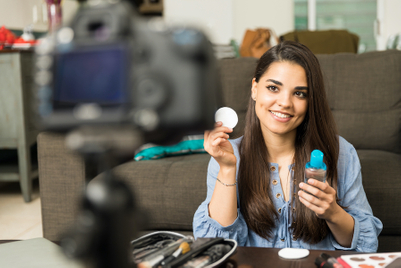
You can and should measure the impact of aggregated content in several ways, according to Murty.
“We try to gauge what measures of brand perception will, in the long term, have a positive impact on our business,” Murty explained in an interview with Campaign Asia-Pacific.
“For example, let’s say you’re a car company and you find that a perception that your brand is environmentally conscious tends to raise sales by 5 per cent. Well. Then you’ll build content that will create that view of your brand.”
You might also like
- CASE STUDY: How Intel China fed on-demand native content to IT decision-makers
- The internet of things: Opportunities and risks for connected brands
- Inside Lenovo's partnership with YouTube star Ryan Higa
Taking the long-view is hard for brands that are used to launching a campaign and measuring the direct benefits. “People often don’t do a very good job at owned [media], because you can’t take half-measures and you have to be patient for long-term returns,” observed Murty.
The questions to ask of your content strategy, according to Murty, are:
- What type of content, of brand tonality, will impact the business metrics you’re aiming for?
- What stories do I need to tell, what impact do they have on my brands, and what impact does it have on my business?
“Anyone who runs any content has to measure it by that chain,” he said. “One tells you you’re doing the right thing and the other tells you you’re doing things right.”
How this applies to Intel
At a high, overarching level, Intel’s desired band perception is to have consumers believe that a smart and connected device that has an Intel chip inside it is a better device.
“What we do as a publisher is to improve brand affinity and brand love," Murty said. "So for Intel, our goal is to shape our environment so that when people buy devices, they look for Intel.”
The strategy used to achieve this is multi-dimensional. “First, we must make our customers successful," he said. "We market to Dell and HP, for example, so we want to make sure that as we go to market, people will connect Intel with positive experiences with the devices made by these brands.
"We also care about immediacy; we don’t want people to look at one of these products and go, ‘Oh, that’s nice’. We want them to think, ‘My computer is slowing down, my tablet’s too old, I want a new one and I want it NOW.' To have someone who is not just entertained and informed by our content but someone who’s willing to act.”
To measure this, the questions Intel asks of its content strategy include:
- Do more people seek products with Intel inside?
- Are people beginning to like and desire to purchase our customer’s products?
- Are we driving traffic from our paid social to e-tailers and retailers so we convert?
“We think of content along this continuum: Inspiring and informing, assisting and leading them to a place where they actually buy things, constant measurement,” shared Murty. “You have to set your goals and keep tweaking.”
How to tailor content
 Obviously, don’t just push your sales agenda. “Everyone in the world won’t be interested in the same story," Murty said. "It’s a long-tail strategy and you tell many stories. Don’t forget, some people buy newspapers just for the sports pages, some for the politics, and some for financial news. The way publishers think is the way you need to, it all comes back to the way you want to define your brand.”
Obviously, don’t just push your sales agenda. “Everyone in the world won’t be interested in the same story," Murty said. "It’s a long-tail strategy and you tell many stories. Don’t forget, some people buy newspapers just for the sports pages, some for the politics, and some for financial news. The way publishers think is the way you need to, it all comes back to the way you want to define your brand.”
For example, Intel doesn't use its Facebook page to talk about Intel’s products, because the brand believes that if someone has spent five minutes on its page, they should get something back.
“Build an audience with interesting content around a topic you want your brand associated with, and along the way, you get a chance to talk about your products,” said Murty.
The topics Intel writes about centre on tech curiosity. “We tell them about the cool new things. All the cool new things.”
You have to pay
Finally, you have to pay to get your content out there and your voice heard. Owned media cannot move the needle on its own.
“Who’s going to come to your website? How are you getting people there? Even if you have an amazing owned strategy, you need patience. A million people won’t show up overnight. You have to put money into paid, it’s the world we live in.”
It’s also about substantial investment into developing great owned properties and the publishing team that’s needed to run content. The decision to go down that path, said Murty, is not unlike making the leap from owning a music studio versus having a hundred musicians on the payroll. “Do I want to be a recording studio? Or do I want to be a music label? That’s the choice.”
There is also less and less of a distinction to be made between paid, owned and earned media, if all are done well. he said.
“Let’s talk about F1 sponsorship as an example," he said. "It starts with a paid strategy. Mercedes has sponsored the safety car for years. That’s paid. But from an earned standpoint, people are thinking and saying that Mercedes is the safest car. You start with sponsorship, and you end with perception.”
The interrelationship is so tight at the moment that the definitions change back and forth at all moments, said Murty. “It’s critical for companies to make sure they’re agile enough to change the mix between them.”


.jpg&h=334&w=500&q=100&v=20250320&c=1)


.png&h=334&w=500&q=100&v=20250320&c=1)


.png&h=334&w=500&q=100&v=20250320&c=1)




.jpg&h=268&w=401&q=100&v=20250320&c=1)

.jpg&h=268&w=401&q=100&v=20250320&c=1)
.jpg&h=268&w=401&q=100&v=20250320&c=1)
.png&h=268&w=401&q=100&v=20250320&c=1)

